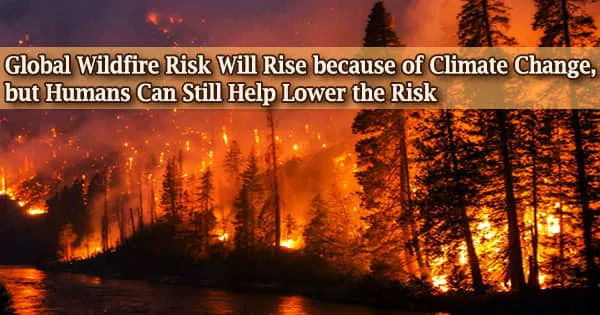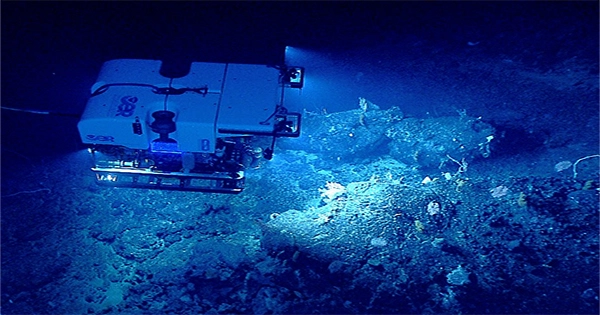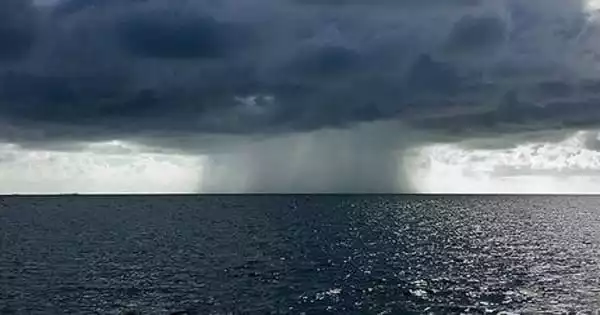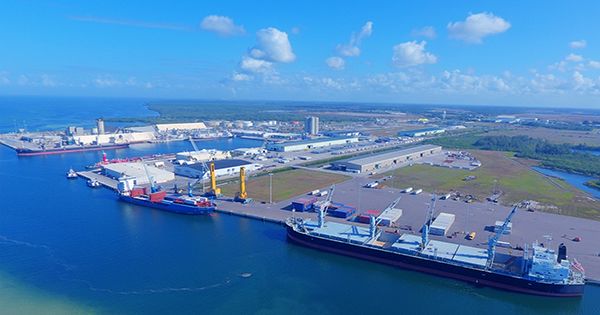A new study shows how wildfire risk is increasing globally as a result of climate change, but also how human decisions and policies can be very important in controlling regional effects.
A multinational research team led by the University of East Anglia (UEA) in the UK conducted the study, which demonstrates that anthropogenic climate change is a “push” element that raises the danger of wildfires globally.
Climate change is increasing the hot, dry conditions that fuel flames, increasing the risk of big wildfires by making landscapes more prone to burning more frequently and more severely. Future climate change consequences on fire risk are expected to worsen, with each additional degree increasing the danger of wildfires.
Climate models indicate that due to human-induced global warming of about 1.1°C, the frequency of fire weather conditions in particular global regions, such as the Mediterranean and Amazonia, is unprecedented compared to the recent past climate.
More significantly, if global temperatures continue on their current course, they will warm by 2-3°C, and this will be the case in almost all regions of the planet.
Climate models have also demonstrated that historical climate change has considerably increased the likelihood of some of the most recent and devastating wildfires in the western US, Australia, and Canada.
Scientists from UEA, Swansea University, the University of Exeter, the Met Office in the UK, the CSIRO Climate Science Centre in Australia, as well as coworkers from the US, Germany, Spain, and the Netherlands, collaborated on the article, which was published today in the journal Reviews of Geophysics.
It looks at how historical, present, and future fire patterns relate to a variety of factors that can affect fire activity, such as climate, human activity, land use, and shifting vegetation productivity, all of which have a significant impact on how wildfires start and spread across landscapes.
Despite the fact that weather conditions promoting wildfire have already increased in nearly in every region the globe and will continue to do so, human factors still mediate or override the climatic ones in many regions. We hope this research helps to resolve the entrenched and conflicting views on climate change versus land management being the root cause of these catastrophic fires.
Dr. Cristina Santín
Lead author Dr. Matthew Jones, of the Tyndall Centre for Climate Change Research at UEA, said: “Wildfires can have massive detrimental impacts on society, the economy, human health and livelihoods, biodiversity, and carbon storage. These impacts are generally magnified in the case of forest wildfires.”
“Clarifying the link between forest wildfire trends and climate change is critical to understanding wildfire threats in future climates. Societies can either push with or pull against the rising risks of fire under of climate change, and regional actions and policies can certainly be important for preventing wildfires or reducing their severity.”
“Ultimately, though, we will be fighting the tide of escalating fire risks as the world warms further. Doubling down on efforts to cut greenhouse gas emissions and limiting warming to below 2°C is the most effective thing we can do to avoid the worst risks of wildfire on the global scale.”
The authors emphasize that in a warming world, humans have significant regional effects on wildfire activity. For instance, they have boosted fire ignitions and decreased some ecosystems’ natural resilience to fire, particularly in the main tropical deforestation zones of Indonesia and the Amazon.
Contrarily, by turning land to agriculture and dispersing the natural flora, as has happened in savannah grasslands in recent years in Africa, Brazil, and Northern Australia, people have also lessened the spread of wildfire over naturally prone environments.
Additionally, they can prevent unintentional ignitions or put out flames, as has historically been done in the woodlands of the US, Australia, and Mediterranean Europe. The scientists warn that in areas where fire is a normal part of ecosystem function, this may have unforeseen consequences.
For instance, regulations that ferociously prohibited fire from the western US landscape during the 20th century have led to forests that are currently overrun with vegetative fuels, which has caused more destructive wildfires during recent droughts.
The usage of low-intensity fires during periods of safe weather is increasingly seen as a crucial technique for managing fuels while simultaneously promoting ecosystem services.
Key findings from the analyses include:
- Internationally, between 1979 and 2019, the average length of the annual fire weather season has increased by 14 days (27%), while the average number of days with extreme fire weather has increased by 10 days (54%), globally.
- Since the 1980s, fire weather has increased dramatically in the majority of geographical regions. Increases have been most noticeable in the Mediterranean, Amazonia, and western North America. Due to historical warming, fire weather has already become more common in the Mediterranean and the Amazon than its natural variability.
- This will hold true at 2°C in both the temperate forests of the western US and the boreal forests of Siberia, Canada, and Alaska. Nearly every region of the world will see unheard-of fire weather at 3°C.
- Between 2001 and 2019, the total area burned by flames fell by around a quarter, or 1.1 million km2. African savannahs, where 60–70% of the land is destroyed by fire each year, account for a large portion of the 590,000 km2 decline. Local and regional human influences, combined with decreased grassland productivity during (ever-dryer) wet seasons, have decreased the area burned by fire in tropical savannahs.
- Other places have also seen significant increases in the burned area, particularly in temperate and boreal woods. For instance, the area affected by the fire has grown by 3,400 km2 (54%) and 21,400 km2 (93%) in the forests of western North America and east Siberia, respectively (Pacific Canada and US combined).
Co-author Dr. Cristina Santín, from Swansea University and the Spanish National Research Council, added:
“Despite the fact that weather conditions promoting wildfire have already increased in nearly in every region the globe and will continue to do so, human factors still mediate or override the climatic ones in many regions. We hope this research helps to resolve the entrenched and conflicting views on climate change versus land management being the root cause of these catastrophic fires.”
The study reanalyzed cutting-edge datasets from satellite observations and simulations and evaluated 500 earlier academic papers. There are evaluations of global trends in fire weather and burned area for all countries, as well as macroregions at the continental scale and important regional ecosystems for fire activity or impact.
Future changes in fire weather for these same places are investigated at 1.5°C, 2°C, 3°C, and 4°C of policy-relevant warming, giving insight into how the success or failure of climate policies corresponds to the risks of wildfires we will have to live with in the future.
“Global and regional trends and drivers of fire under climate change” by Matthew Jones et al, is published in Reviews of Geophysics on June 30, 2022.
















